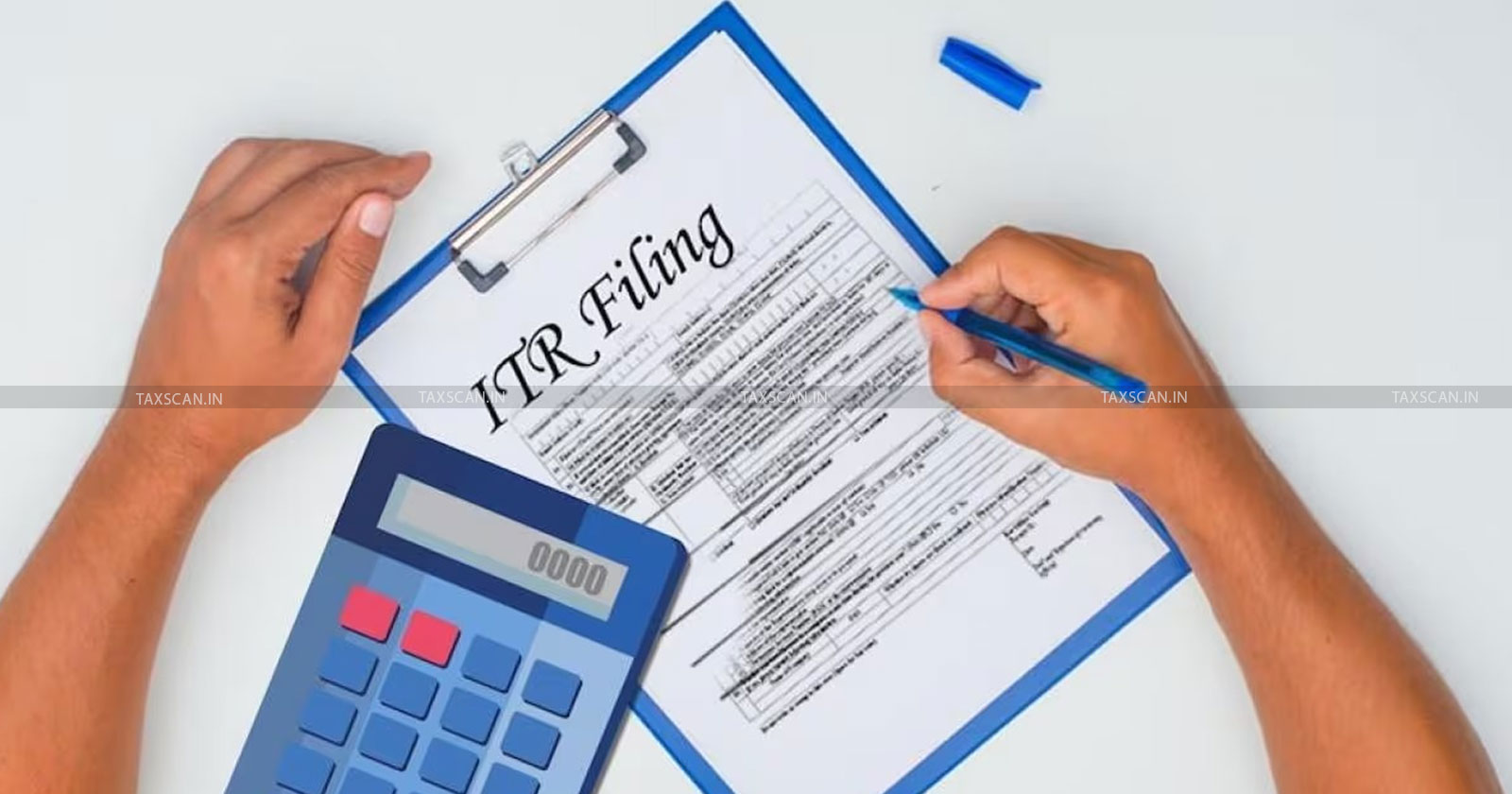Income Tax Return Filing: Complete ITR Form 1 Checklist for AY 2025-26
The government has notified the income tax return forms. Here’s the complete checklist for the ITR 1

For individual taxpayers with basic income sources, ITR Form 1 (Sahaj) is a one-page income tax return form. To make tax filing easier and more convenient for qualified taxpayers, the Income Tax Department updated the form for the Assessment Year (AY) 2025–2026 by adding a few categories of capital gains and making other minor amendments. On April 29, 2025, notice of this was published in the gazette.
What is ITR Form 1 (Sahaj)
For residents with total incomes up to ₹50 lakh, ITR-1 (Sahaj) includes income from a single residence, revenue from other sources such as bank interest or family pension, income from restricted agricultural income, and income received as a salary or pension. Additionally, under section 112A, long-term capital gains up to ₹1.25 lakh (from listed shares or mutual funds) may be reported, provided that no brought-forward losses exist.
Complete Ready to Use PDFs of 200+ Agreements Click here
Who is eligible to file ITR-1
The eligible taxpayers include:
- Resident individuals (excluding those who are not ordinarily resident)
- Individuals with total income up to ₹50 lakh
Income sources limited to:
- Salary or pension
- One house property (with no carried-forward losses)
- Other sources like bank interest, family pension
- Long-term capital gains under section 112A (up to ₹1.25 lakh)
- Agricultural income up to ₹5,000
Who is ‘NOT’ eligible to file ITR-1
You cannot file ITR-1 if you:
- Have total income exceeding ₹50 lakh
- Are a non-resident or resident not ordinarily resident (RNOR)
- Earn income from more than one house property
- Have income under the head “Profits and Gains of Business or Profession”
- Report short-term or long-term capital gains (except eligible LTCG under section 112A)
- Have agricultural income exceeding ₹5,000
- Claim foreign tax relief under sections 90/90A/91
- Own assets or have signing authority in any foreign account
- Are a director in a company or hold unlisted equity shares
- Have TDS deducted under section 194N or deferred tax on ESOP
Step by Step Guide of Preparing Company Balance Sheet and Profit & Loss Account Click Here
Types of Income That Cannot Be Reported in ITR-1
(a) Profits and gains from business and professions;
(b) Capital gains;
(c) Income from more than one house property;
(d) Income under the head other sources which is of following nature:-
(i) winnings from lottery;
(ii) Activity of owning and maintaining race horses;
(iii) Income taxable at special rates under section 115BBDA or section 115BBE;
(e) Income to be apportioned in accordance with provisions of section 5A
(f) Agricultural income upto Rs. 5000
(g) Short Term Capital Gains and Long Term Capital Gains exceeding Rs. 1.25 Lakhs
Specifying Nature of Employment in the Return
It is mandatory to define the nature of employment while filing of return from the following: -
- Central Government Employee
- State Government Employee
- Employee of Public Sector Enterprise (whether Central or State Government)
- Pensioners (CG/SG/PSU/OTHER)
- Others
- Not applicable (in case of family pension income)
If tax has been deducted at source, you must also provide employer details such as TAN, name, and address.
Documents required to file ITR-1
While no documents need to be attached to the ITR (it’s an annexure-less return), keep these ready for accurate data entry:
- PAN card and Aadhaar card
- Form 16 from your employer
- Salary slips
- Interest certificates from banks/post office
- Form 26AS (tax credit statement)
- Annual Information Statement (AIS) and Taxpayer Information Summary (TIS)
- Bank account details (at least one pre-validated for refund)
- Proof of investments for deductions (under Section 80C, 80D, etc.)
- Details of long-term capital gains under section 112A (if applicable)
- Details of house property (address, co-owner, home loan interest, etc.)
- Agricultural income details (if applicable)
Precautions While Filing the Return of Income
- Carefully select the tax regime.
- Ensure details like PAN, permanent address, contact details, bank account details, etc. are correct in the pre-filled data.
- Download your AIS and Form 26AS and review the actual TDS/TCS/tax paid; if you find mismatches, reconcile them with your employer, bank, or tax deductor.
- Gather all key documents including bank statements, interest certificates, receipts for deductions, Form 16, Form 26AS, investment proofs, etc.
- Identify the right ITR form (ITR-1 to ITR-7) for your case and fill in details like total income, deductions, taxes paid, etc. (Note: No need to attach physical documents).
- File your return online before the due date to avoid penalties, loss of deductions, or inability to carry forward losses.
- After filing, e-verify your return. If you prefer manual verification, print and sign the ITR-V Acknowledgement and send it by speed post to CPC, Income Tax Department, Bengaluru 560500 within the deadline.
Default Tax Regime
Keep in mind that the new tax regime applies by default unless you opt for the old regime specifically. Choose the regime wisely, depending on your eligibility and tax planning strategy.
Precautions to Avoid Common Filing Mistakes
- Choose the correct ITR before filing it; else filed return will be treated as defective.
- Do not misreport income under the wrong head
- Link Aadhaar and PAN.
- Pre-validate your bank account where you want to receive your refund.
- Cross-check TDS/TCS credits against Form 26AS
- Ensure LTCG under section 112A does not exceed ₹1.25 lakh if you’re using ITR-1
- Do not claim deductions or exemptions you’re not eligible for
- File a revised return before the due date if any mistakes are discovered
- Complete e-verification within the required time to avoid invalidation
- File the return within the specified timelines.
- File the responses for the notices received from the ITD within the specified timelines.
Complete Referencer of GSTR-1, GSTR-1A, GSTR-3B, GSTR-9 & GSTR-9C Click Here
Deductions Listed in ITR Form 1
Old Tax Regime
The deductions are available only for the taxpayers who opt for the old regime. The below are the income tax deductions can be claimed by the ITR Form 1 filer if they are eligible to claim such exemptions:
- Section 80C : Deduction in respect of life insurance premia, deferred annuity, contributions to provident fund, subscription to certain equity shares or debentures, etc.
- Section 80CCC : Deduction in respect of contribution to certain pension funds.
- Section 80CCD(1) : Deduction in respect of contribution to pension scheme of Central Government.
- Section 80CCD(1B) : Deduction in respect of contribution to pension scheme of Central Government.
- Section 80CCD(2) : Deduction in respect of contribution to pension scheme of Central Government/State government
- Section 80CCH : Deduction in respect of contribution to Agnipath Scheme.
- Section 80D : Deduction in respect of health insurance premia.
- Section 80DD: Deduction in respect of maintenance including medical treatment of a dependant who is a person with disability
- Section 80DDB : Deduction in respect of medical treatment, etc
- Section 80E : Deduction in respect of interest on loan taken for higher education
- Section 80EE : Deduction in respect of interest on loan taken for residential house property
- Section 80EEA : Deduction in respect of interest on loan taken for certain house property
- Section 80EEB : Deduction in respect of purchase of electric vehicle
- Section 80G : Deduction in respect of donations to certain funds, charitable institutions, etc
- Section 80GG : Deductions in respect of rents paid
- Section 80GGA : Deduction in respect of certain donations for scientific research or rural development
- Section 80GGC : Deduction in respect of contributions given by any person to political parties
- Section 80TTA : Deduction in respect of interest on deposits in savings account
- Section 80TTB : Deduction in respect of interest on deposits in case of senior citizens
- Section 80U : Deduction in case of a person with disability
- Any other Deduction as per the e-filing utility
New Regime
In the new tax regime, Chapter-VIA deductions cannot be claimed, except deduction under Section 80CCD(2)/80CCH/80JJAA as per the provision of Section 115BAC of the Income Tax Act. In case, taxpayer wants to claim any deductions (as applicable), then the taxpayer needs to choose the old tax regime by selecting the “Yes” option in ITR 1 / ITR 2.
ITR-1 (Sahaj) Filing Complete Checklist for AY 2025-26: Summary
This is the summary of ITR-1 Checklist that one should know:
- Confirm eligibility for ITR-1 based on your income sources and limits
- Gather all required documents (Form 16, Form 26AS, AIS, investment proofs, bank details)
- Choose the correct tax regime (old or new)
- Accurately fill in personal and employer details, is you’re a salaried employee
- Report all applicable income, including eligible LTCG within threshold
- Claim only valid deductions and exemptions
- Verify all details thoroughly before submission
- Complete e-verification after filing
- Keep the acknowledgment and computation summary for future reference
Support our journalism by subscribing to Taxscan premium. Follow us on Telegram for quick updates


